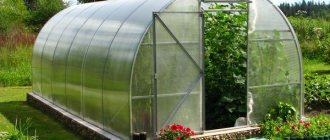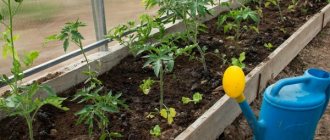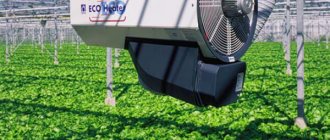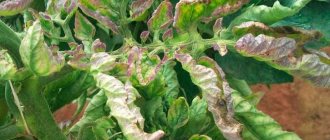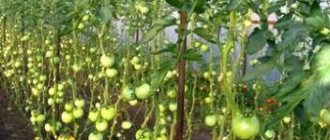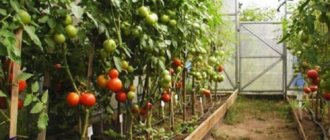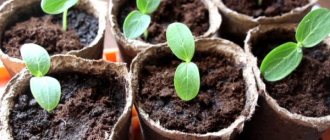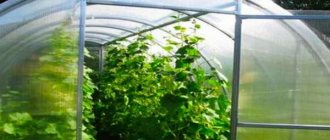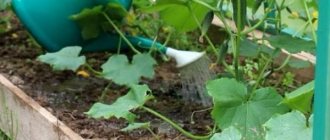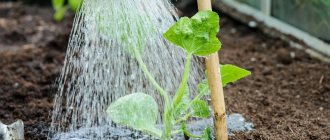Tomatoes are a self-pollinating crop. The fruits of these plants are set after the pistil of the flower is fertilized with its own pollen. If this process is disrupted for some reason, the tomato does not form full-fledged fruits, resulting in the formation of hollow ovaries, which the plant discards as unnecessary. To prevent such a disaster from happening to tomato bushes, you need to know why the fruits do not form and be able to eliminate the causes of this phenomenon.
How to help the process of pollination of a crop if it does not want to do it itself, and what are the secrets of obtaining a bountiful harvest - read on.
Self-pollination process
It is not without reason that complete pollination of plants is considered the key to high yields of tomatoes. It is this stage of the growing season that is considered key, since it is pollination that leads to the formation of ovaries, from which fruits eventually grow.
How to determine whether plants pollinate themselves or need help? It’s very simple: a pollinated flower moves its petals back. If this is not observed, the gardener is obliged to help the plant and create suitable conditions for it to bear fruit normally.
Methods of natural pollination
There are three ways to pollinate tomato bushes growing on a balcony, veranda or in a greenhouse:
- Spraying the ovaries with a sugar solution will help attract .
- For tomatoes that grow in a greenhouse, natural growth conditions are created. Insects are attracted to the pollination process. Flowers are planted in a greenhouse for them, and sweet water is placed in the spaces between the rows. Basil or marigolds planted next to tomatoes will attract bees and further enhance the taste of the fruit.
- If the weather is hot and windy, the room is ventilated . The wind promotes the natural process of pollination. Open two windows on opposite walls of the building and create a draft.
On a note . Attracting bumblebees increases productivity by 30-40%. It is no coincidence that these insects are used in modern industrial greenhouses.
If tomatoes are not naturally pollinated
The tomato harvest depends on the number of ovaries on the stalks after the plant blooms. Pollen is formed on the bushes, which fertilizes its own and neighboring flowers. Tomatoes are pollinated by wind and insects.
Such processes are also possible in a greenhouse or loggia: just ventilate the room in warm weather, and in hot weather do not close the doors at all. If this is not enough, artificial pollination is carried out, which will be discussed in detail below.
Looking for the cause of the problem
The tomato flower has a pistil and produces its own pollen, unlike plants that are cross-pollinated and have either stamens or pistils.
For proper formation of fruits during the flowering period, a suitable indoor microclimate is necessary. Before pollination, it is necessary to create appropriate conditions, since flowering without intervention does not guarantee the formation of all ovaries.
Vegetable growers often encounter the fact that flowers fall off or do not form ovaries at all. There are several reasons for this phenomenon:
- light deficiency;
- damage to plants by infections and diseases;
- lack of nutrients;
- excess fertilizer (chicken manure, manure or nitrogen);
- the formation of a large number of empty flower buds;
- using your own seeds when planting tomatoes: F1 type hybrids are not grown from seeds collected in the garden.
When growing tomatoes indoors in early spring or winter, it is difficult to organize conditions for self-pollination of plants (constant ventilation and the presence of insects). In order not to expose the crop to the risk of infertility, vegetable growers carry out timely pollination of tomatoes artificially, having previously provided the plant with an optimal microclimate.
Preparations for tomatoes in the greenhouse
For high-quality ovary formation, after artificial pollination, the following drugs are used:
- Boric acid solution. 10 grams of powder per 10 liters of hot water. After dissolving the powder and cooling the solution to room temperature, all pollinated bushes are sprayed with it.
- Gibberros. In case of rapid flowering, it will help in the process.
- Ovary. A universal, environmentally friendly stimulator of fruit formation.
- Tomaton. Under unfavorable weather conditions, it forms ovaries together.
- Bud.
When growing tomatoes at home or in greenhouses, you need to know all the details. Correct and timely pollination, as well as the creation of a favorable microclimate, is the key to a good and high-quality harvest.
The process of artificial pollination of plants during the cold months
Self-pollination is carried out in several simple ways. The optimal time is morning; it is highly desirable that the weather is sunny. The procedure is carried out during the flowering period, with an interval of two days.
First use natural methods - ventilating the greenhouse and attracting insects (if weather conditions permit). But if such methods of plant pollination do not bring results, pollen is transferred manually.
Why are tomatoes pollinated in a greenhouse?
A bountiful harvest of tomatoes in the future depends directly on the number of ovaries formed on the bush, which is impossible without pollination. The procedure is carried out if the plants do not pollinate on their own, for example, in cold weather, when it is impossible to organize ventilation in the plant or to use insects.
When is pollination done?
When choosing a time for pollination, pay special attention to weather conditions: on a rainy day or with high humidity, the process will be much more difficult. Pollination is carried out in sunny time of day, every other day. After this, the ground is immediately watered and after 3 hours the windows and doors are opened to ventilate the room.
Optimal humidity level and temperature for pollinating tomatoes indoors
For high-quality pollination of greenhouse plants, the optimal air temperature and permissible humidity level are important indicators that must be monitored. In open ground, it is almost impossible to maintain suitable parameters due to unpredictable weather.
The temperature should not drop below 18 °C. Otherwise, the properties of the pollen will deteriorate. Also, pollen does not scatter when the humidity is more than 70-75%. But too dry air also negatively affects the cross-pollination process.
Important ! Do not allow the air temperature to exceed 30-40 °C. Even during periods of short heat, flowers may fall off.
Pollinating tomatoes at home
A good harvest of tomatoes on the balcony, loggia and windowsill depends not only on the growing conditions and the chosen variety. It is very important not to miss the time of fruit set: the more flowers of a plant are pollinated, the more tomatoes will ripen. The secrets and nuances of pollination of tomatoes should be known to everyone who wants to enjoy the taste of their own harvest at home. How to pollinate tomatoes at home - read the article.
Methods of artificial pollination
Pollination of tomatoes is carried out in the morning, as pollen ripens at night. This is done in the following ways:
- For artificial pollination, improvised means are used - brushes, toothbrushes or cotton balls. This method is extremely simple - brush or tassel one flower at a time, then transfer the pollen to another inflorescence. When using a toothbrush, bring it to one flower and gently move it inside the bud, then place it over the next bud and do the same. As a result, pollen falls inward.
- A directed air stream is well suited for the pollination process. To create an artificial flow of oxygen, use a fan or hair dryer. Sometimes gardeners simply shake the bushes so that pollen flies from one bud to another. The artificial wind should not be strong: otherwise the pollen will scatter throughout the greenhouse and fall to the ground. Place the air source as far away from the flowers as possible. However, it should not be hot.
- The procedure for shaking the bushes is performed as quickly as possible. To obtain strong ovaries that guarantee a harvest, lightly tap the stem, shake the plant, and the pollen will fall onto the pistil. And if your bushes are tied up, then it is better to knock not on the stem, but on the trellis, in order to minimize contact with the plant.
Sometimes artificial pollination alone is not enough. The crop produces few ovaries under natural growing conditions, and as a result, the yield decreases. Some drugs are used to stimulate the pollination process:
- " Ovary ". This is a ready-made stimulator of fruit formation, a universal and environmentally friendly product.
- " Bud ". Accelerates the formation of fruits, contains sodium salt, which stimulates the development of bushes. The composition includes manganese, boron and copper. Soaking seeds and treating plants before sowing reduces the number of empty flowers and accelerates the growth of young shoots.
- " Gibberros ". Biologically based crop growth regulator. Increases the number of ovaries, stimulates the development of tomatoes, increases the speed of crop ripening and provides immunity to diseases. Plants are sprayed with the drug, and “Gibberros” is also used to soak seeds before sowing.
- «Boric acid". Dissolve 10 g of powder in a bucket of hot water. Stir the solution and cool to a temperature of +25 °C. Pour into a container and spray the already pollinated plant.
- " Tomaton ". Fruiting stimulator. Used in greenhouses, hotbeds or open ground under different climatic conditions. The drug contains auxin, which promotes the supply of nutrients to the root system and reduces the growth of lateral stems. The yield level increases by approximately 20-40%, depending on growing conditions and the availability of proper care. The harvest ripens 7-12 days earlier.
Timely pollination will increase the volume of the harvest and prevent deformation of the fruit. Carrying out the procedure manually requires care: the ovaries of tomatoes are fragile and tender and break easily.
Conditions for successful fruiting of tomatoes
In order for pollinated flowers to fully develop and produce a good harvest on the windowsill or balcony, it is necessary to grow full-fledged bushes capable of ripening the maximum number of fruits. Much depends on the choice of variety, which is selected based on growing conditions. Low-growing varieties reaching a height of 50 cm are suitable for the windowsill. It is quite possible to grow medium-sized and tall varieties on the balcony and loggia. Resistance to diseases, productivity, undemandingness to abundant lighting, early ripening are the main criteria for choosing varieties for the home.
Container and soil for tomatoes
We select containers for each plant with a volume of at least 5 liters from any material. We buy ready-made soil for planting or make it ourselves. The soil should be loose, easily permeable to water: mix manure humus, peat, sand in a 2:1:1 ratio. Add 1 tablespoon of wood ash per 5 liters of soil as a mineral fertilizer.
Lighting and watering
We water as the top layer of soil dries with warm water. During fruit set, water the soil in the first half of the day, after artificial pollination has occurred. At home, fertilize with mineral complex fertilizers with a full range of microelements.
Temperature
Temperatures below 15°C negatively affect not only the overall development of the plant, but also the fruit set. The ideal temperature is 22-25°C, without sudden changes.
If all conditions of maintenance and pollination are met, the inflorescences develop normally, multiple pollination occurs and after 90-110 days fruits of different colors and shapes begin to ripen. Their weight ranges from 50 g to 800 g depending on the variety.
The process of fruit set and their quality is beneficially affected by spraying bushes ready for flowering with a solution of boric acid. Dissolve 10 g of powder in 10 liters of hot water, cool and spray the plants while warm.
Take a little time during the flowering period of tomatoes, approach the process of pollination wisely, and they will thank you with juicy and tasty fruits.
Source
How to pollinate tomatoes correctly
Without pollination there will be no harvest. In a greenhouse, the requirements that help the plant to pollinate and form fruits are not always met. In order for a crop to successfully form fruit ovaries, it requires special conditions.
Flowering and pollination characteristics of tomatoes
Tomatoes in a greenhouse bloom and pollinate only if the following conditions are met:
- Watering the bushes is done only at the root;
- the soil is moistened infrequently, but abundantly (2 times a week, 3 liters of water per plant);
- loosening is carried out at least 2 times a month;
- after each watering, the soil is mulched with peat or humus;
- air humidity is not lower than 60% and not higher than 75%;
- the air temperature in the greenhouse is not lower than +18 and not higher than +30 ° C.
On a note. The optimal conditions for growing tomatoes in a greenhouse were determined practically. Their organization requires effort, but it will not be in vain, but on the contrary, it will lead to a bountiful harvest.
How to create conditions favorable for pollination
Pollination of tomatoes in closed ground is possible only when optimal conditions are created. What is needed:
The number of ovaries is also reduced if the bush is formed incorrectly and has a large number of buds that consume nutritional components.
In order not to lose the lion's share of the harvest, tomato bushes must be grown in compliance with the following rules:
A greenhouse made of polycarbonate or other material must have high-quality lighting. In the dark, even strong ovaries will not bear fruit.
Secrets of tomato pollination
Experienced vegetable growers use a simple technique to attract pollinating insects into the greenhouse: place a container with jam, honey or any sugary treat at the entrance. Bees come to the smell of sweets and pollinate tomatoes along the way.
On a note. Potassium fertilizers promote fruit set, but without potassium chloride - plants do not tolerate chlorine. And do not forget about complex fertilizing with nitrogen-phosphorus fertilizers.
To create a humid microclimate in hot weather, increase the number of waterings and place a container of water between the rows.
To reduce humidity, mulch the soil around the tomatoes. This will prevent moisture from evaporating into the air and keep it near the roots.
Tips and tricks
If you come to your dacha no more than once a week, experienced gardeners advise installing an automatic window in the greenhouse. The costs for it will quickly pay off with a rich harvest.
Advice ! A mechanism for automatically opening and closing greenhouse windows and doors can be made with your own hands from 2 containers of different sizes, a cork, a connecting hose, a tube and a cord. All this can be easily found at any dacha. The containers are connected by a tube, filled with liquid and secured in the greenhouse. One of the containers is connected to the window using a cord. The system works independently. For its functioning, only the air temperature in the greenhouse structure matters.
Fans are also installed in the greenhouse - they also stimulate pollination of plants.
According to experts, it is better to choose varieties specially bred for cultivation in greenhouses. They tolerate greenhouse conditions more easily and respond well to artificial pollination.
Even if the flowers are naturally pollinated, check them. If there are unpollinated ones, fertilize them artificially.
